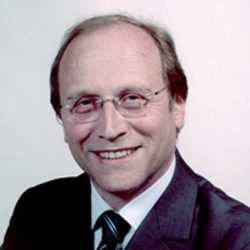The challenges to radiology caused by turf battles
14:15–15:30
Session 1
Challenges: Radiology in turf battles.
Prof. Philippe Grenier, Chairman of the Department of Diagnostic Radiology, Hôpital Pitié-Salpêtrière; Paris/FR
There are several reasons why turf battles for imaging occur: 1) Medical imaging has become essential for the diagnosis, treatment planning and patient follow-up. 2) Interventional radiology provides efficient procedures that are a credible alternative to surgery, challenging the surgeons who want to survive. 3) Radiologists are currently facing an explosion of the demands and, paradoxically at the same time, a drop in human resources. 4) Radiologists do not have the control of patients. 5) As their interests are driven by the market, equipment companies advocate purchase of imaging equipment for clinicians.

Having trained at the School of Medicine, University of Paris, a residency in diagnostic radiology at the Assistance Publique - Hôpitaux de Paris, and certification from the French Board of Radiology, from 1978 to 1982 he was a Fellow at the Radiology Department in Hôpital Beaujon, Faculté de Médecine Xavier Bichat, Université Paris VII, where he was appointed Associate Professor of Radiology. He then became Professor of Radiology at the Faculté de Médecine de Bobigny, Université Paris XIII, until accepting his current role in 1989.
The professor is a founding member of the European Society of Thoracic Imaging, Member of the European Society of Radiology and Elected Member of the International Society of Strategic Studies in Radiology.
His awards include Honorary Membership of many international radiological societies, e.g. in North America, Canada, Sweden, Italy, Japan, Austria, Argentina, and in 2007, Gold Medal of European Congress and Association of Radiology (Honorary Member), and he has been President, Chair and General secretary of radiological societies, including being on the Executive Committee of European Congress of Radiology (1997 to 2003), ECR 2002 President, and Chair of the Executive Committee of ECR (2003), Chair of the Education Committee of the European Association of Radiology (EAR) until 2007. Since 2009, he has chaired the International Advisory Board of the RSNA.
With main interests in chest imaging, lung cancer, interstitial lung disease, airway disease, COPD and asthma, his scientific publications are notable. He not only serves on the editorial boards of European Radiology , Academic Radiology, Journal of Thoracic imaging and on the Advisory Board of Acta Radiologica, but also authored around 200 articles in peer-reviewed journals, 67 book chapters or books, and presented 155 guest lectures.
Prof. Grenier has received many awards for his scientific and education exhibitions, from the RSNA, ECR, and the American Roentgen Ray Society, as well as the Prix Herman Fishgold for Imagerie Thoracique de l'adulte, Flammarion, 2nd Ed, 1996, the Giovanni Di Chiro Award for Outstanding Scientific Research published in J Comput. Assist. Tomogr., as well as the Editor of Radiology’s recognition award for reviewing with distinction.
Recommendations:
1) The radiology department must ensure service 24/24 hours for 365 days per year and demonstrate efficiency, quality insurance and patient safety. An increase in productivity may convince the administrative director not to fragment and multiply imaging equipment in clinical departments.
2) Ensure competence of all staff radiologists in emergency radiology, develop radiology subspecialties and participate in all multidisciplinary conferences.
3) Forge an alliance with clinicians having no desire to engage in a battle against radiologists and keep a strong position on the hospital’s Executive Board.
4) Refuse any training in imaging techniques to clinicians and promoting studies that compare performances of radiologists and clinicians in interpreting imaging examinations.
5) Produce recommendations in training requirements of a high level in specific fields of radiology to discourage clinicians getting through.
6) Keep advances in the science and knowledge of new emerging imaging techniques or modalities. ‘Today’s research is tomorrow’s clinical practice’.
11.02.2011











